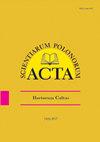活覆盖物在苹果树几种砧木上的应用——长期评价
IF 0.7
4区 农林科学
Q4 HORTICULTURE
引用次数: 0
摘要
在波兰西南部的下西里西亚地区,评估了几种活覆盖物对苹果树生长、营养状况、产量和果实质量的长期影响。对6个由砧木分化的苹果树群体进行了估算:M.26、M.9、P60、P2、P16和P22。在试验1中,种植一年生的苗木,并在同一年播种多年生活覆盖物:殖民地弯草(Agrostis vulgaris With.)和白三叶草(Trifolium repens L.),次年播种蓝羊茅(Festuca ovina L.)。在2号试验中,蓝羊茅的播种被推迟到果园种植后的第二年、第三年、第四年和第五年。当种植一年树龄的树木时,覆盖作物的存在显著影响了幼树的生长。在植树后的第一年或第二年播种活覆盖物会显著降低幼树的累积产量。活覆盖物改善了幼龄果园果皮的红色,但也降低了平均果实重量和大小。然而,它也有助于降低苹果树叶片中的氮浓度,并且随着果园的老化,树木对活覆盖物的耐受性增加。半矮化砧木的选择、覆盖作物的推迟播种和优质苗木被认为是培养苹果树对成行活覆盖层耐受性的最重要因素。本文章由计算机程序翻译,如有差异,请以英文原文为准。
Application of living mulch in rows of the apple trees on several rootstocks – long-term evaluation
The long-term influence of several living mulches on apple tree growth, nutrient status, yield, and fruit quality concerning the year of cover crop sowing in tree rows was evaluated in the Lower Silesia region in the southwestern part of Poland. The estimation was conducted in six apple tree ‘Ligol’ populations differentiated by the rootstock: M.26, M.9, P 60, P 2, P 16, and P 22. In experiment no. 1, one-year-old nursery stock was planted, and perennial living mulches were sown: colonial bent grass (Agrostis vulgaris With.) and white clover (Trifolium repens L.) in the same year and blue fescue (Festuca ovina L.) in the following year. In experiment no. 2, which involved two-year-old stock, the sowing of blue fescue was delayed until the second, third, fourth, and fifth years following orchard planting.
The presence of the cover crop significantly affected young tree growth when one-year-old trees were planted. The sowing of the living mulch in the first or the second year after tree planting led to a significant reduction in the cumulative yield obtained from the young trees. The living mulch improved the red coloration of the fruit skin in the young orchard, but it caused a reduction in the mean fruit weight and size. However, it also contributed to decreased nitrogen concentration in the leaves of the apple trees, and the tree tolerance to living mulch increased as the orchard aged. A choice of semidwarf rootstock, postponed sowing of cover crop, and high-quality nursery stock were recognized as the most important factors for fostering apple tree tolerance to living mulches in tree rows.
求助全文
通过发布文献求助,成功后即可免费获取论文全文。
去求助
来源期刊
CiteScore
1.30
自引率
14.30%
发文量
61
审稿时长
4-8 weeks
期刊介绍:
In Acta Scientiarum Polonorum Hortorum Cultus we publish original research papers and review articles containing new and significant information on broad aspects of horticulture and related disciplines. The papers are published in English only, in six issues yearly.

 求助内容:
求助内容: 应助结果提醒方式:
应助结果提醒方式:


